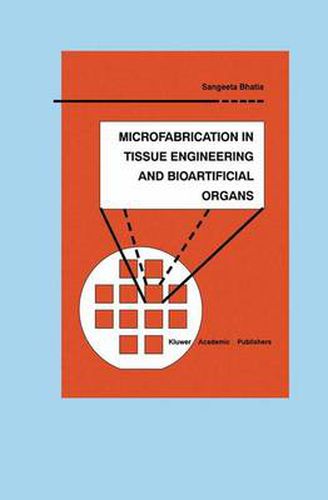Readings Newsletter
Become a Readings Member to make your shopping experience even easier.
Sign in or sign up for free!
You’re not far away from qualifying for FREE standard shipping within Australia
You’ve qualified for FREE standard shipping within Australia
The cart is loading…






This title is printed to order. This book may have been self-published. If so, we cannot guarantee the quality of the content. In the main most books will have gone through the editing process however some may not. We therefore suggest that you be aware of this before ordering this book. If in doubt check either the author or publisher’s details as we are unable to accept any returns unless they are faulty. Please contact us if you have any questions.
The drive to replace damaged tissues with tissue engineered constructs has led to fundamental questions regarding the importance of cell-cell and cell-substrate interactions in achieving the desired result. Photolithographic techniques coupled with standard silane chemistry can be readily adapted to reproducibly create arrays of cells on glass substrates, allowing control over the cell-cell and cell-substrate interactions of interest. These techniques have applications in bioartificial organs, in particular, and this study focuses on the utility of microfabrication in optimization of a bioartificial liver device.
$9.00 standard shipping within Australia
FREE standard shipping within Australia for orders over $100.00
Express & International shipping calculated at checkout
This title is printed to order. This book may have been self-published. If so, we cannot guarantee the quality of the content. In the main most books will have gone through the editing process however some may not. We therefore suggest that you be aware of this before ordering this book. If in doubt check either the author or publisher’s details as we are unable to accept any returns unless they are faulty. Please contact us if you have any questions.
The drive to replace damaged tissues with tissue engineered constructs has led to fundamental questions regarding the importance of cell-cell and cell-substrate interactions in achieving the desired result. Photolithographic techniques coupled with standard silane chemistry can be readily adapted to reproducibly create arrays of cells on glass substrates, allowing control over the cell-cell and cell-substrate interactions of interest. These techniques have applications in bioartificial organs, in particular, and this study focuses on the utility of microfabrication in optimization of a bioartificial liver device.